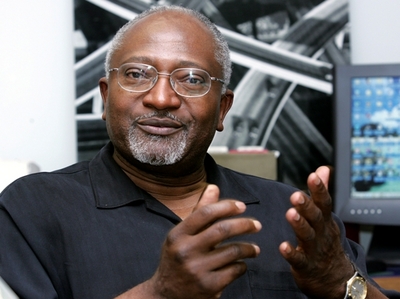ATLANTA, GA The State of Black Atlanta Summit 2010 was held last month on the campus of Clark Atlanta University in Atlanta, GA. The one-day Summit was convened by the Environmental Justice Resource Center to coincide with the Black History Month celebration and was part of the center's Smart Growth and Sustainable Communities Initiative (SGSCI) funded by a grant from the Ford Foundation. The Summit organizers commissioned working papers from top Atlanta leaders in academic, public health, business, media, and local community based organizations with the goal of impacting public sector policies around health, environmental justice, civil rights and human rights, transportation and land use, housing and home ownership, wealth creation and business development, equitable development, education, food security, and parks and green access in Atlanta's underserved communities. More than a dozen Summit authors presented a shared vision for leading Black Atlanta into a just, healthy, and sustainable future.
The Summit also provided a forum at which diverse aspects of the community can learn about shared priorities for the year. This overview article represents a synthesis of challenges, barriers, and opportunities facing Black Atlanta, often hyped as the Black Mecca. The key issue raised in this critique revolves around one important question--will Atlanta's black population reap any substantive benefits as the city becomes green and sustainable?
Going Green and Sustainable As Black Atlanta Shrinks
Atlanta is the thirty-third largest city in the United States, with an estimated population of 537,958 in 2008, an increase by 28 percent from the 2000 census. Atlanta has seen dramatic demographic increase in its white population over the past several decades. According to the Brookings Institution, the proportion of whites in Atlanta's population grew faster between 2000 and 2006 than that of any other U.S. city. Only Washington, D.C. experienced a comparable increase in the white population share during the 2000-2006 time period. Atlanta went from being 51.3 percent black in 1970 to 67.1 percent black in 1990 to 61.4 percent black in 2000 to 55.8 percent black in 2008.
The demographic tilt toward a "whiter Atlanta" is occurring at a time the 20-county Atlanta metro region is becoming more racially diverse. In 2000, whites made up 60 percent of the region's population. By 2006, the white share of the region had shrunk to 54 percent. The shrinking Black Atlanta footprint led some pundits to predict a white mayor after Shirley Franklin's second term. Their prediction was nearly affirmed when African American state senator Kasim Reed defeated white city councilwoman Mary Norwood for Atlanta's 59th mayor in December 2009. The final margin separating the two candidates was 714 votes out of more than 84,000 cast. Norwood was vying to become Atlanta's first white mayor since 1973.
Atlanta is a city of paradoxes. It is home to the largest concentration of black millionaires and is number three on the list of the "Top 101 cities with the most people below 50% of the poverty level, excluding cities with 15% or more of residents in college and with the median age below 28 (population 50,000+)." Atlanta has one of the highest child poverty rate in the country at 48.1 percent in 2004, higher than Detroit (47.8 percent), Long Beach (45.8 percent), Miami (41.3 percent), and Milwaukee (41.3 percent). Black Atlanta families are nearly three times more likely than white Atlanta families to be poor. According to the U.S. Census Bureau, 20.8 percent of Atlanta's black families and 7.4 percent of white families fell below the poverty line in 2008.
Efforts are underway to make Atlanta green and sustainable. Atlanta's sustainability ranking jumped from 38th out of the 50 most populous U.S. cities in 2006 to 19th in 2008. However, greening Black Atlanta remains a challenge. Atlanta ranked 23 of 28 among comparable cities in the number of park acres per 1000 residents for 2008. Just half of Atlanta's residents live within a half-mile of Atlanta's 3,576 acres of parkland, only about 4.5 percent of the city's land area. New parks are desperately needed in Atlanta which has only Atlanta which has only 7.4 acres per 1,000 persons, compared to the national average of 13.7 acres. Black neighborhoods in Southwest Atlanta are the most "under-parked" areas in the city.
In 2009, more than $78.72 billion were allocated to clean energy and weatherization under the $787 billion American Recovery and Reinvestment Act (ARRA). Of this total, $248 million went to Georgia. The overall goal of the Weatherization Assistance Program is to reduce the burden of energy prices on the disadvantaged. In the Atlanta metropolitan area, homeowners and renters could save about 2 percent of their income by investing in retrofits. Black Atlanta could receive significant benefits from clean-energy investments, including a substantial expansion in job opportunities, especially for people with high school degrees or less; rising wages; reduced home heating and utility costs; and improved access and convenience for public transportation.
(Note: You can view every article as one long page if you sign up as an Advocate Member, or higher).





